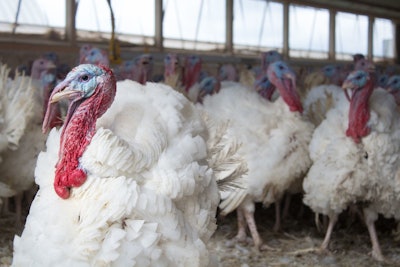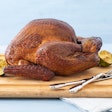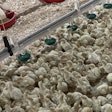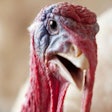
Turkey farms with a predominant population of toms could be more susceptible for a highly pathogenic avian influenza (HPAI) infection than those without toms, according to a study from the United States Department of Agriculture (USDA).
Victoria Fields, DVM, USDA National Animal Health Monitoring System poultry specialist, presented data that could back up that idea while speaking at the International Avian Influenza Summit on October 17 in Fayetteville, Arkansas.
Fields said the study involved the cooperation of 125 commercial turkey farms in 12 states. Of those, 66 were case farms and 59 were control farms. Fields defined case farms as those that had a positive HPAI detection from January to October 2022, and control farms were those who did not have any confirmed cases during that same time span.
That study revealed a strong presence of toms in 86.4% of the case farms that had been infected, but only 67.8% of the uninfected control farms had toms there.
One reason farms with toms could be more susceptible, Fields said, is that the age of birds has been shown to increase susceptibility to HPAI, and the growth cycle of toms is typically several weeks longer than the growth cycle for hens. She also said that because toms spend more time on the farm, they have further exposure to fomites such as farm personnel and vehicles that could help spread the virus.
Fields also noted that production practices may differ during those extra weeks that toms are on the farm, and that could play a factor for the risk of an HPAI infection.
Fields said the apparent increased risk for farms with toms is good knowledge to have, because “there might be other biosecurity or surveillance measures that can be implemented in those cases.
The 12 states from which producers participating in the study were from included California, Utah, North Dakota, South Dakota, Minnesota, Iowa, Missouri, Wisconsin, Michigan, Indiana, Pennsylvania and North Carolina. Backyard turkey producers and turkey breeding operations were not included in the study.
View our continuing coverage of the global avian influenza situation.
To learn more about HPAI cases in commercial poultry flocks in the United States, Mexico and Canada, see an interactive map on WATTPoultry.com.

















